Singapore launch events and memorable bites 👅


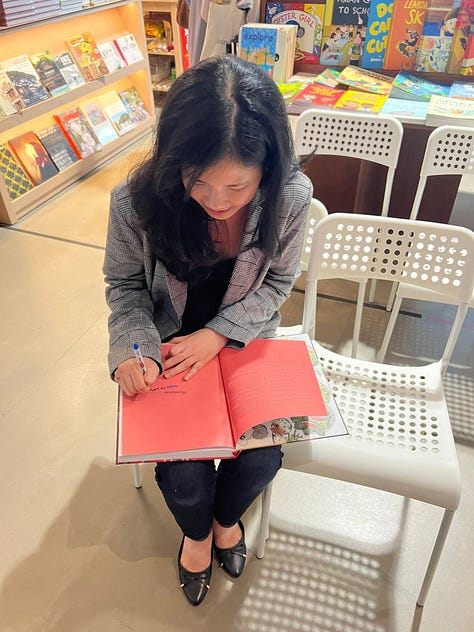
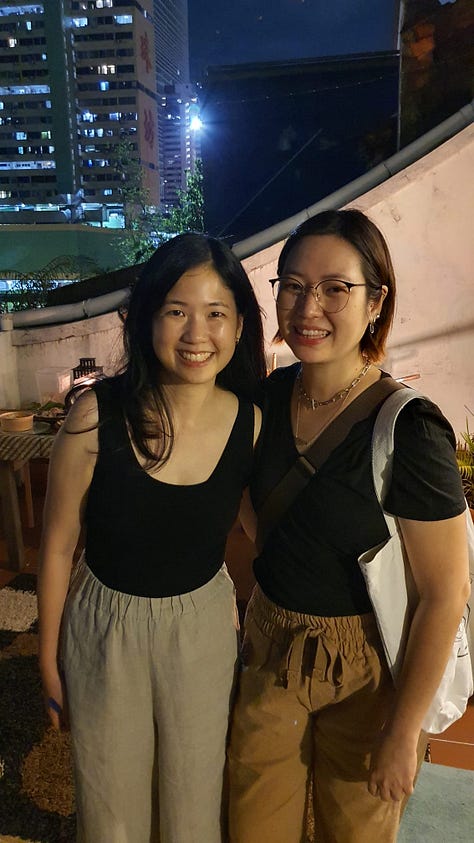
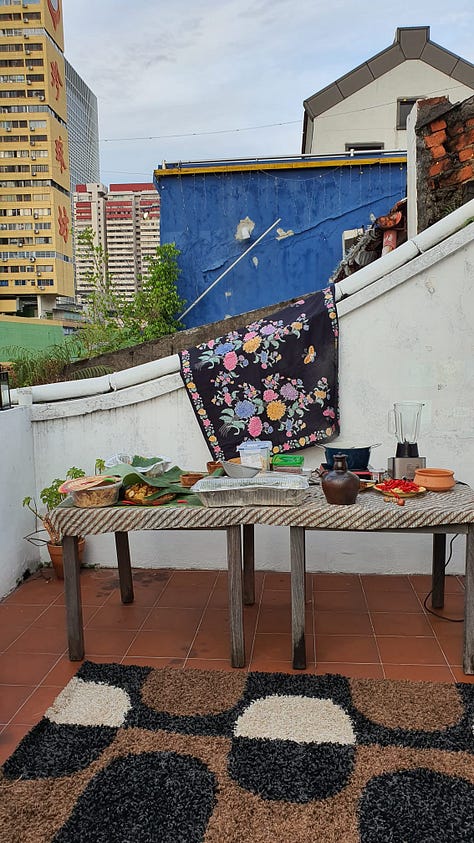

Plantasia was officially launched two weeks ago, and up until that point I had been holding my breath. My first cookbook Wet Market to Table was released in 2019. My publisher had said to me then, “Time to start thinking about your next book.” I already had. At that point, I’d been living in Australia for about a year and was so convicted of the need for an Asian vegetarian cookbook that I had put together an outline for it. But there’s a difference between ideating (the best part) and actually committing to a timeline and putting in the hours. The part that paralysed me was deciding on the publishing route to take: to continue being a traditionally published author or to go solo as an indie author.
When I first signed on with Epigram, my editor, who had a wealth of experience working for major publishing houses in the UK, took me out for lunch. One of the first things she said was, “I want to dispel any notions that you have of making money out of this, because most authors are able to write because they or their parents have deep pockets, they are retired, or they simply don’t need the money.”
I want to continue producing cookbooks for as long as I can, but there’s a cost to pursuing such time- and labour-intensive projects. Independently publishing Plantasia was an experiment to see if by doing everything myself and by taking the publisher’s share of the pie, writing cookbooks could become a more sustainable endeavour.
When you sign with a publisher, the idea that you’re working with seasoned professionals who handle all the risks, maintain high standards, and have great networks within the industry to help with promotion and distribution is a very reassuring one. All I had to do with WMTT was to show up and write, photograph, and do the occasional book event. Publishing a book independently is a wildly different experience. I had hired a fantastic team to put out the best work that I possibly could within the constraints, but there were moments where I struggled with the uncertainty. I knew that I had a great vision that had the potential to be a great product, and I didn’t want to botch it all up. The feeling is like knowing that you have a winning lottery ticket in hand, and you’ve not made it to the bank to cash it in - anything could happen.
This is why it’s been so affirming to hear some of the amazing things that you’ve been saying about the book, and to see so many of you already cooking from it (I’ve saved the photos of your creations as highlights on my IG)! It was surprising, overwhelming, and frankly such a relief. Feels like I finally can let out a long exhale. Thank you so much for cooking from Plantasia, spreading the word, and dropping me thoughtful messages on what you like about my new book 🧡
To purchase the book, you can do so via my website (we ship worldwide) or via the international stockists listed here. A list of virtual and EU book events to come soon, but in the meantime, here’s a radio interview that I did with Melanie Oliveiro when I was back in Singapore.
It’s becoming a tradition to share food recommendations on this newsletter after each trip home. Here are some of the most memorable bites from this visit:
1. Handmade Popiah at Marine Parade Hawker Centre


My first couple of days in Singapore were spent packing book orders at the warehouse, with my dad bringing me easy-to-eat snacks in the middle of the day. Without crab meat or prawns, this popiah might not be as luxe as what you might find at home or at restaurants, but that’s what makes it so remarkable. With nothing else to distract, the spotlight rests squarely on the braised jicama (bangguang) and carrot filling, which is pleasantly crunchy. Texture aside, the flavour is beautifully balanced with ground peanuts, fresh garlic paste, minced hard-boiled egg, and coriander. Truly inspiring. Almost makes me want to wrap my own popiah here in the Netherlands.
2. Thai Noodle House at 5 Coronation Road, Unit 01-03 Coronation Arcade
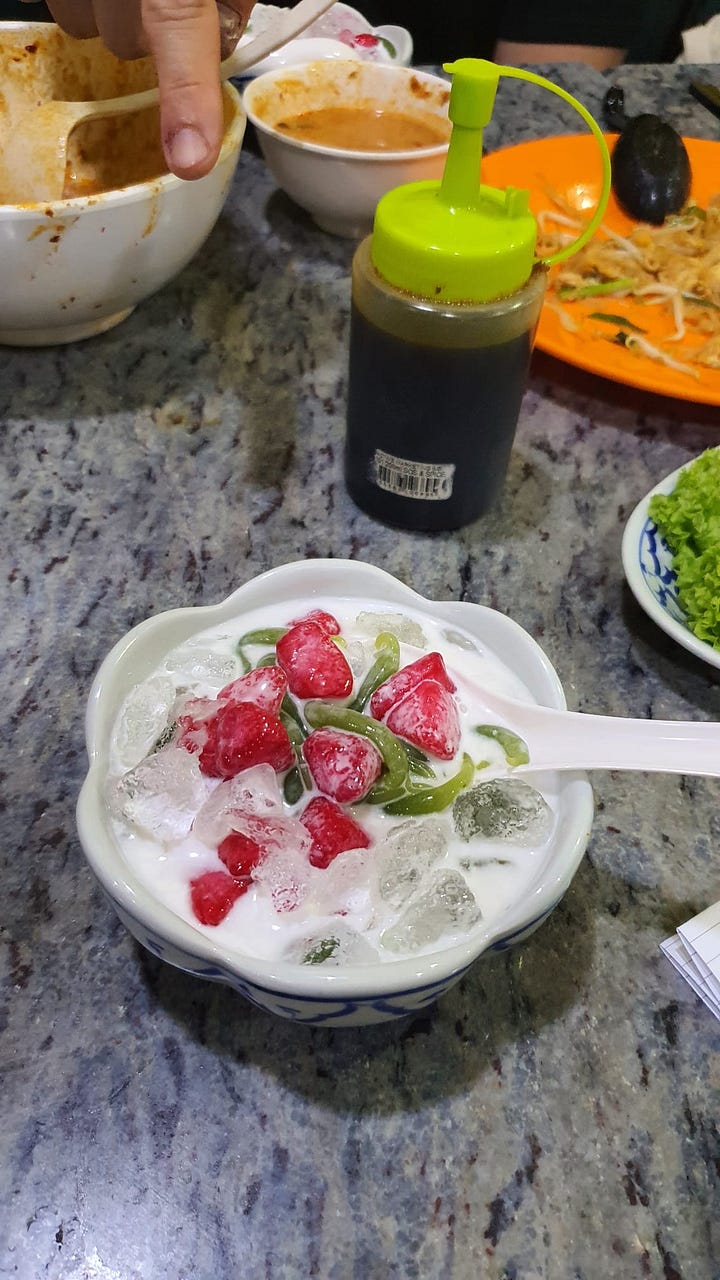

When my friend Joel insisted on taking me to a Thai restaurant that his ex-colleague opened, I wasn’t expecting much. Imagining it to be a swanky place in the CBD, I was pleasantly surprised to find that it was instead a cosy, hole-in-the-wall restaurant operated by a schoolteacher-turned-restauranteur. We had a couple of great dishes that night. The tom yum with glass noodles instantly brought me back to my childhood (this dish, in particular, feels like an especially local take on Thai food). The grilled pork jowl was so well-marinated that a dipping sauce is unnecessary. We also had the off-menu special: a combination of homemade chendol and red ruby. The green noodles had the slight bitter edge and fragrance that only freshly juiced pandan can offer, and a delicate, melt-in-your-mouth texture that is no doubt the product of lots of trial and error. The red rubies were also some of the biggest I’ve come across, so the water chestnut crunch is especially refreshing. A little place with lots of heart - I’m so impressed.
3. Yang Ming Seafood at Blk 150 Bishan St 11 S570150
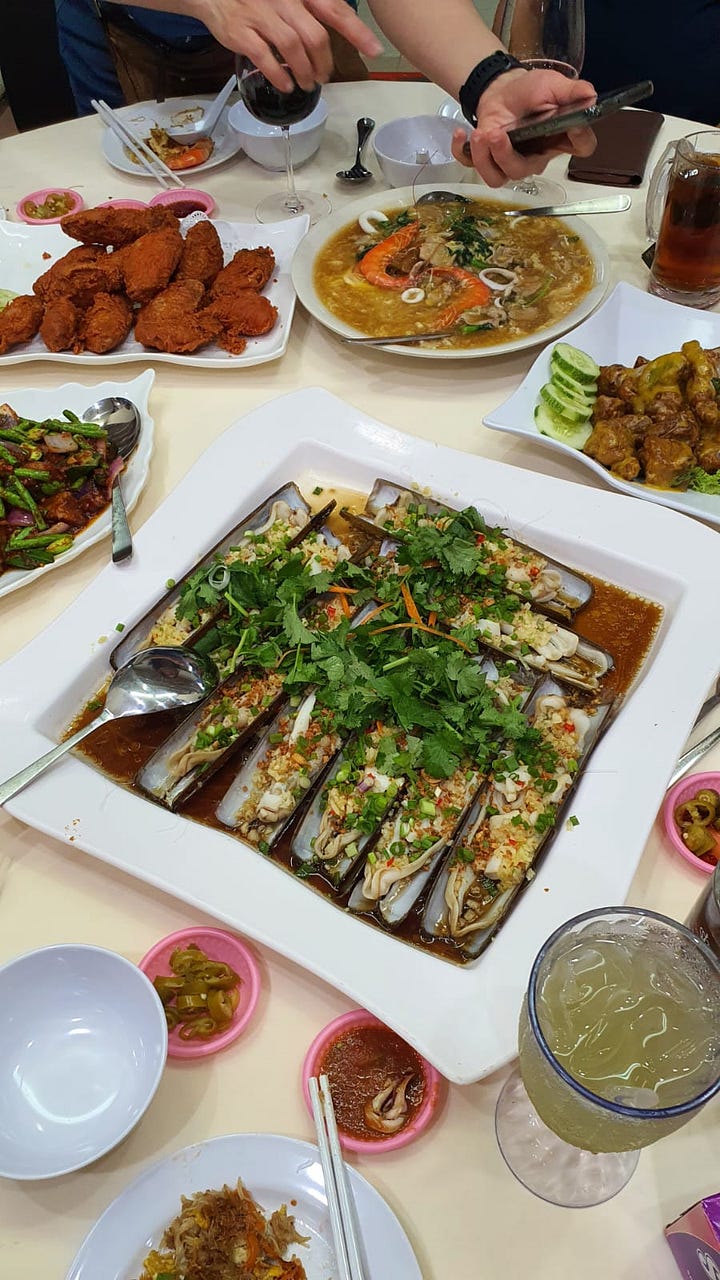

A terrific zichar joint that truly comes into its own at night (we’ve previously been for lunch but it was nowhere as good). The standouts are the bamboo clams and the cereal prawns. And the sambal belacan is out of this world.
4. HariAnns Nonya Table at Paya Lebar Quarter basement (push cart)

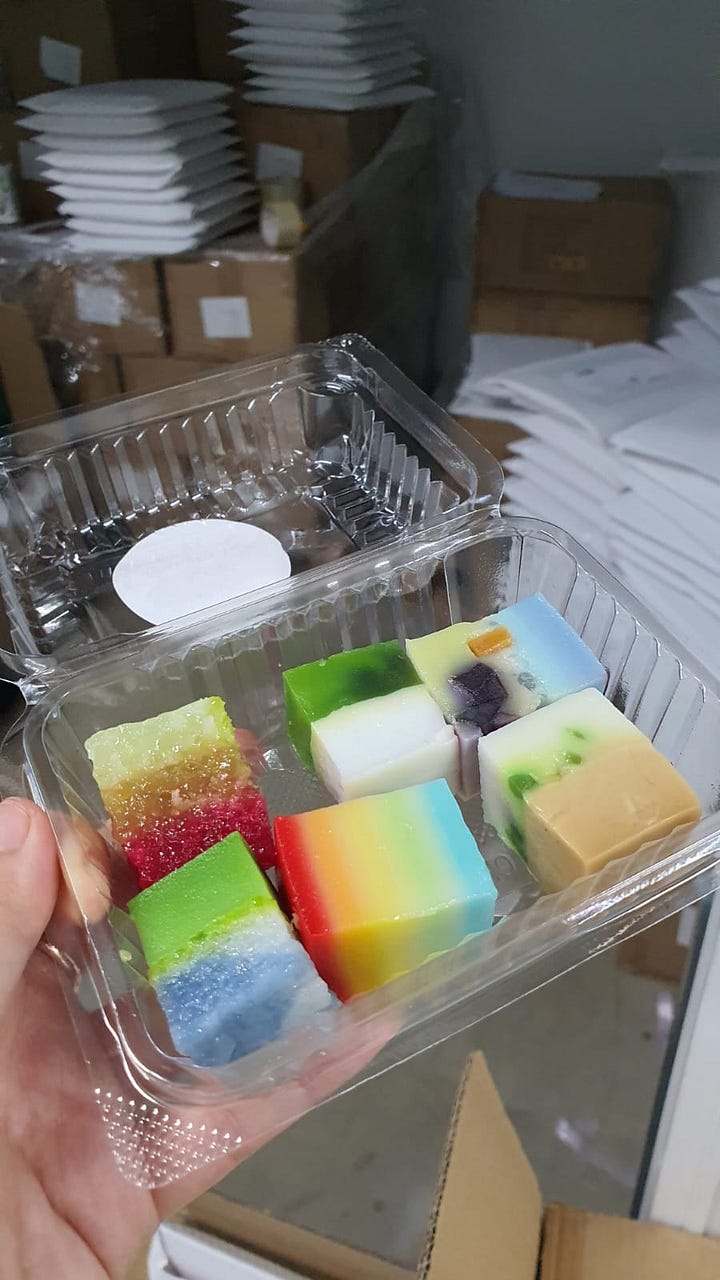
Thanks to my work at Candlenut, I’ve developed a newfound appreciation for kueh in the recent decade. But whenever I’m back and feel like tasting as much as I can, I’m limited to just a few because kueh can be rich and heavy. So when I saw a HariAnns pushcart offering boxes of assorted bite-sized kueh, I thought it was brilliant. Everything was delicious but the one that truly left an impression was the buburchaha kueh, which has chunks of sweet potatoes and tapioca pearls studded throughout the bottom layer. So innovative - I wouldn’t be surprised if other kuehmakers jump on the bandwagon too!
5. Chai Wee Cuttlefish at Chinatown Complex Hawker Centre
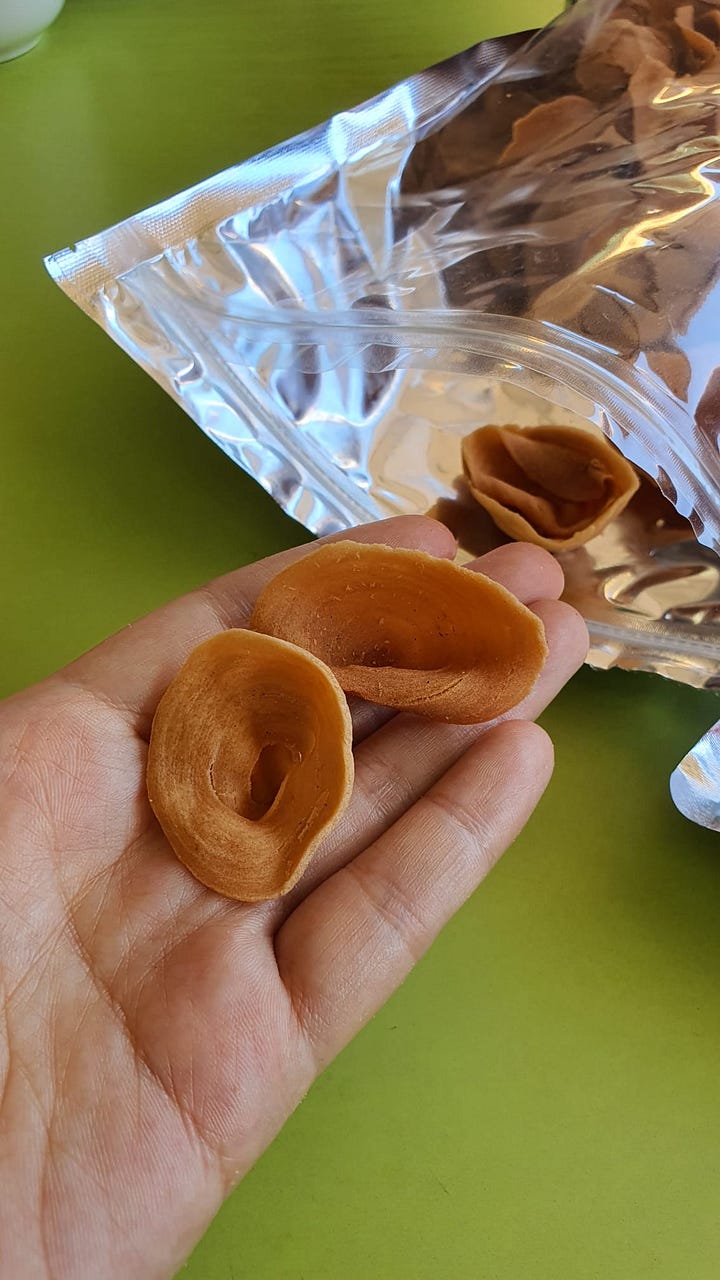

This stall has been generating some buzz on IG lately and deservedly so. Yes, you’ll have to purchase the cuttlefish and pig ear biscuits as a set, but they are both so good! The cuttlefish is wafer thin and perfectly seasoned, while the pig ear biscuits are as textbook perfect as they get. The older generation would probably balk at the price ($15), but upon tasting the cuttlefish and biscuits, I went back and bought three sets for gifting. My grandma, recipient of one of these sets, love them so much that she has asked my aunt to purchase more.
6. Heng Long Teochew Porridge at 246 Upper Thomson Road
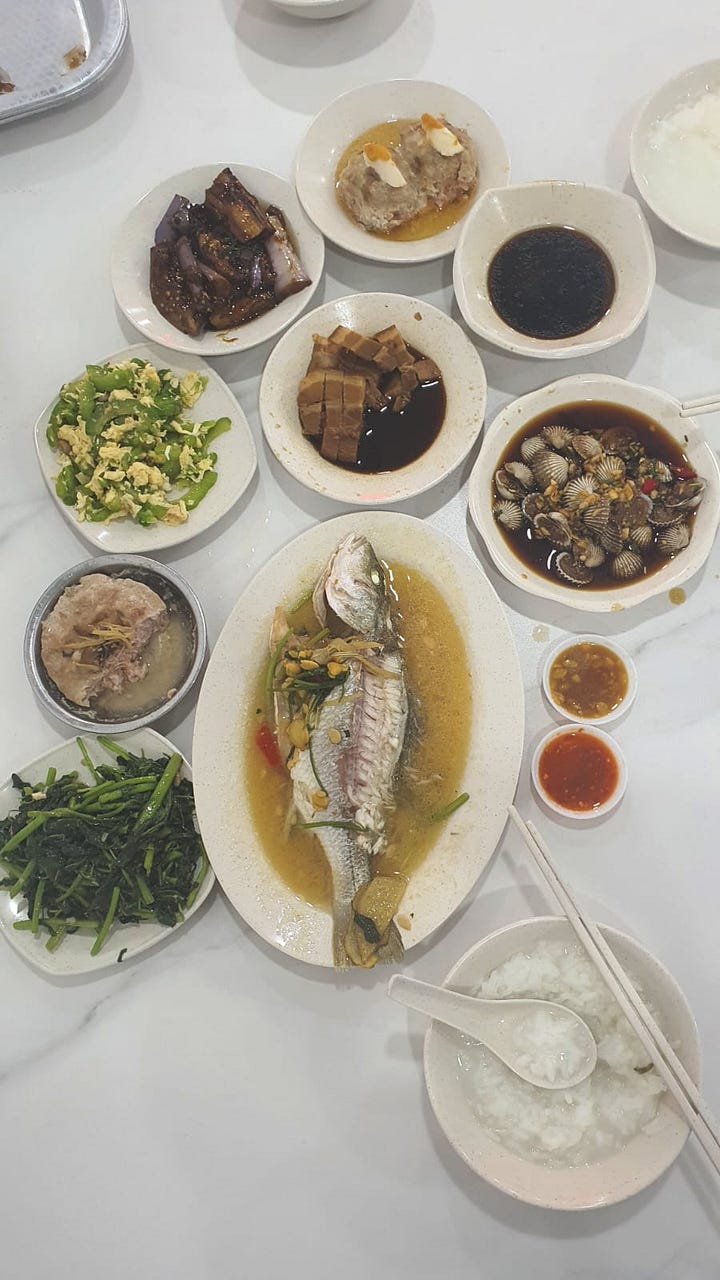
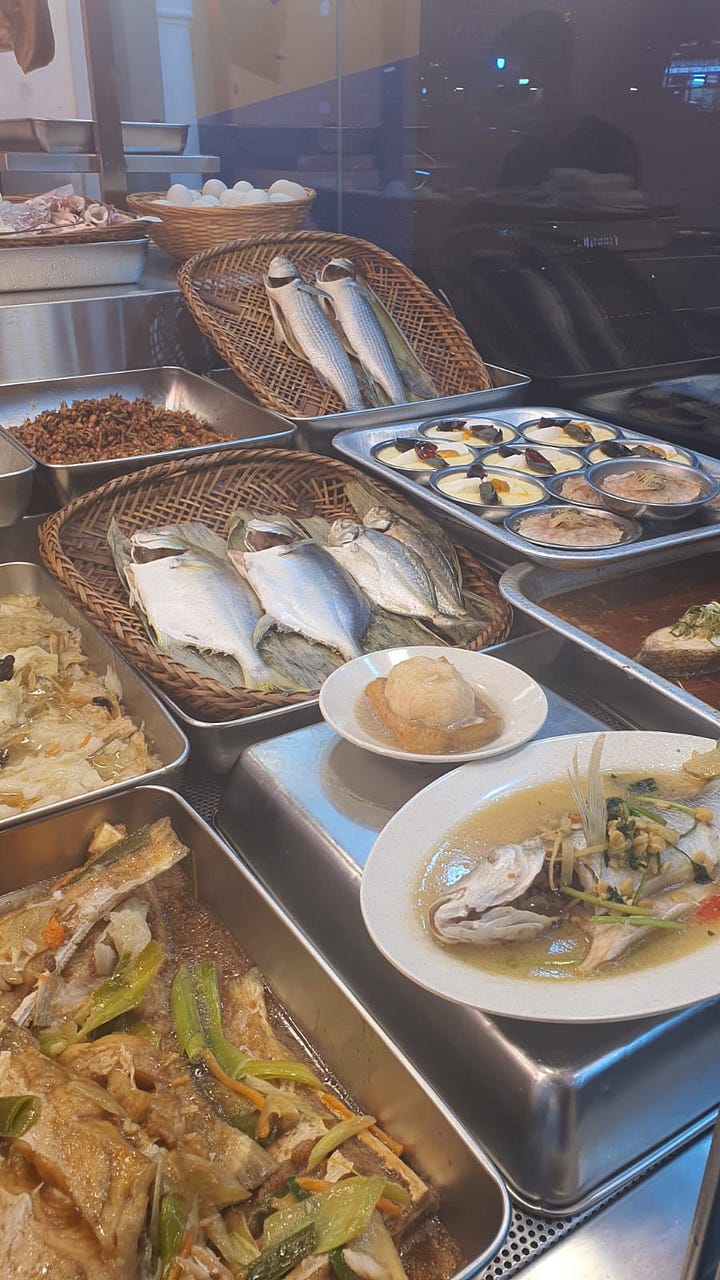
Growing up along Upper Thomson, supper with friends was a big thing when I was younger. Usually we’d go for prata or bakchormee, but there’s a new kid on the block! Having Teochew porridge for supper is new to me, but I can see the appeal. The watery porridge is light on the stomach and it is a great way to share a meal with friends. If you’re a solo diner, don’t let that deter you because Teochew porridge is a well-known post-shift meal for taxi drivers. Heng Long has a great range of dishes, which includes those under the heat lamp as well as chilled dishes, such as marinated cockles. My only gripe is that the hot offerings could have been warmer, but I’d definitely be back!
7. Canton Paradise at NEX #02-04
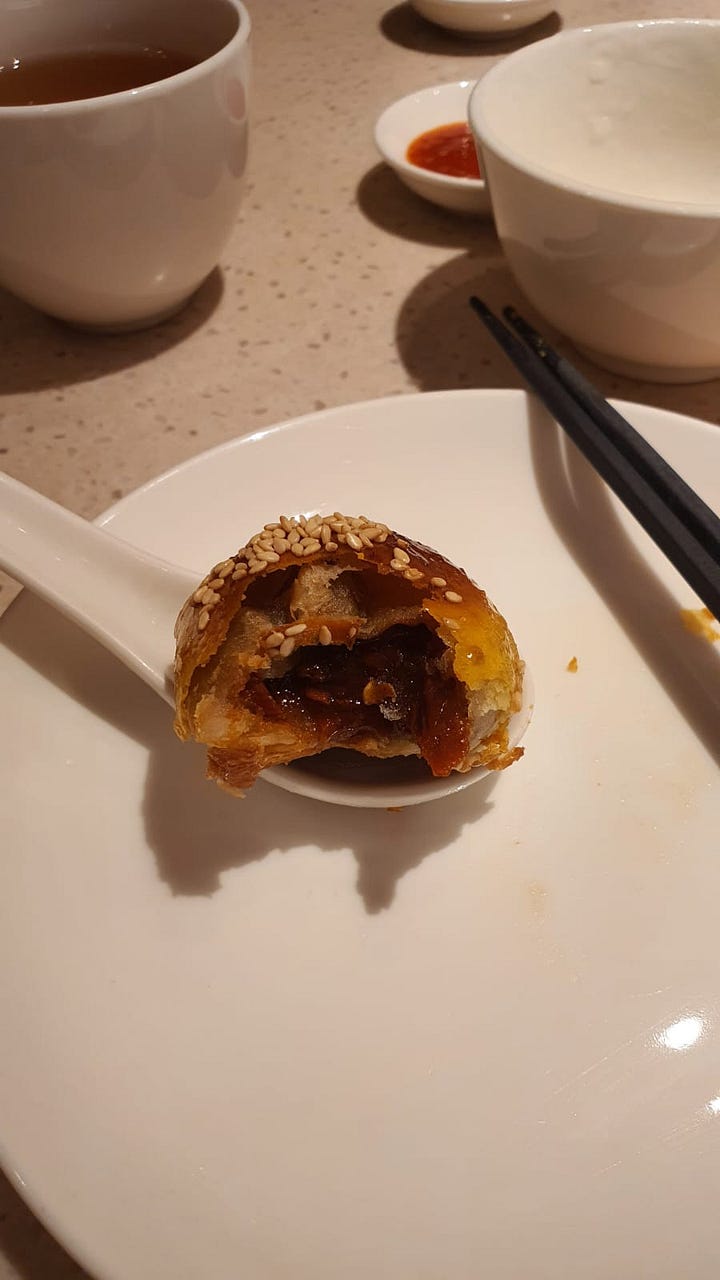
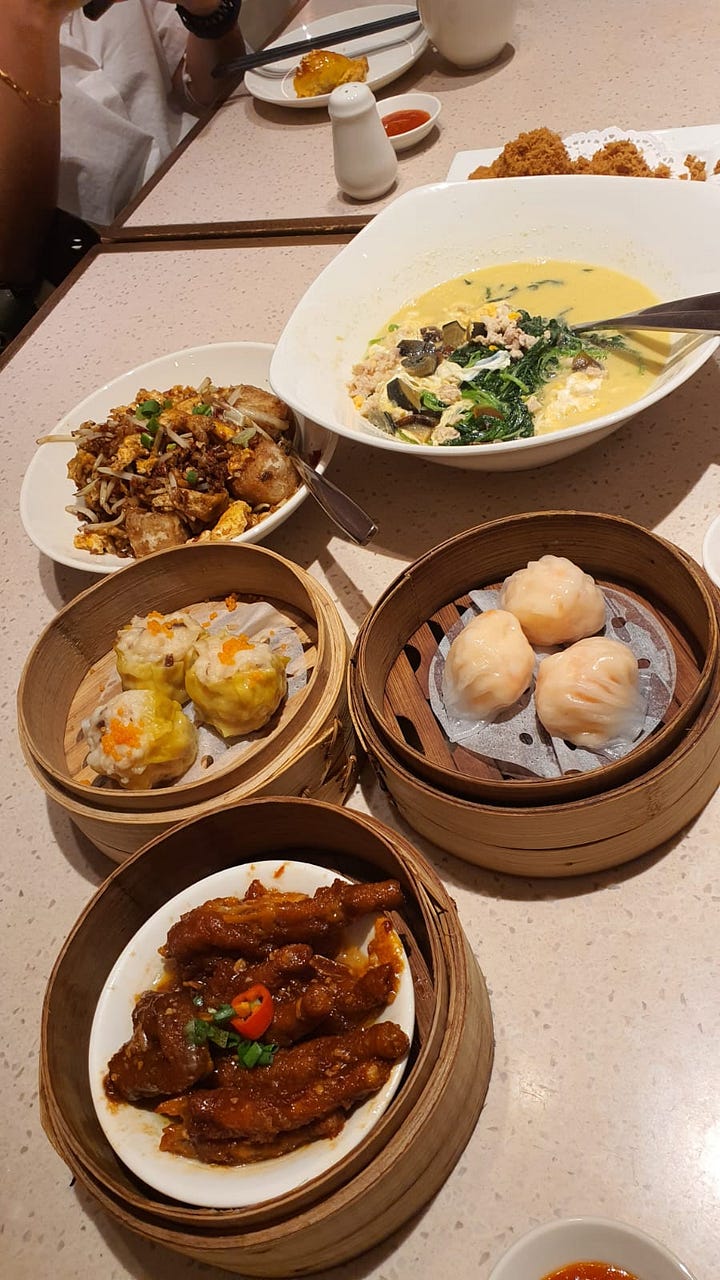
My in-laws have some solid recommendations for food - they took me out for dim sum this time and I had the best char siu sou of my life. I’ve never really liked this dim sum item - the pastry is often too dry in the mouth, and the filling a garish red. But this version is sublime. The pastry is perfectly glazed and crisp, and the filling practically oozes out of the flaky shell. It doesn’t get much better than this. Another dish that blew me away was their three-egg spinach, the classic zichar dish. The small amount of minced pork and dash of cooking wine at the end take it to the next level.



